A gaming-focused CPU that annihilates its higher-priced competitors- Technology News, Firstpost
Mehul Reuben DasJun 19, 2023 09:49:41 IST
Pros
– Gaming performance
– Volume of cache
– Annihilates CPUs more expensive than itself in gaming
– PCI Express 5.0 support
– Lower power draw given the performance
– Longer product line for AM5 platform
– Integrated graphics
Cons
– Does not support older platforms or DDR4 RAM
– Productivity performance not at par with similarly priced CPUs
– Lower thermal limit may lead to thermal throttling
– No multiplier-based overclocking
– No cooler included
Price: Rs 44,790
Rating: 4.25/5
AMD Ryzen 7 7800X3D Review: Overview
The Ryzen 7 series has been monumental in establishing AMD as a proper, true value-for-money gaming and performance option for people looking for a no-frills, high-performance CPU. The CPUs in the Ryzen 7 series have been a massive hit for people looking to build a beast of a gaming machine, without taking the Intel route.
With their 7000 series of CPUs, AMD has turned the dial all the way up to 11. The AMD Ryzen 9 7950X3D is often considered to be one of the best gaming CPUs to have ever come from team red. However, the more recently launched Ryzen 7 7800X3D is not only a better value-for-money CPU but also performs better, especially if you’re just going to be gaming.
There’s no easy way to say this, but the Ryzen 7 7800X3D stands out as the fastest gaming CPU on the market, outperforming pricier alternatives from Intel and even surpassing AMD’s own lineup.
In simple terms, the Ryzen 7 7800X3D is the highly recommended Zen 4 3D V-Cache CPU due to its exceptional speed and impressive power efficiency. Surprisingly, AMD chose to postpone the launch of this particular model and instead introduced the 7950X3D and 7900X3D versions, which became available approximately a month ago.

AMD Ryzen 7 7800X3D Review: Specifications
Similar to other AMD Ryzen processors, the Ryzen 7 7800X3D, based on the AM5 platform, follows a chiplet design, where multiple chips are integrated into a single package. Inside this processor, you’ll find two main chips. The first chip, known as the CCX, is fabricated using a 5nm manufacturing process and contains all 8 Zen 4 CPU cores of the Ryzen 7 7800X3D. The second chip, called the I/O die, is manufactured using a 6nm process and includes various specialized components such as the integrated graphics processor (IGP), memory controller, and PCI Express controller. The CPU comes with 8 cores, as we said, and 16 threads.
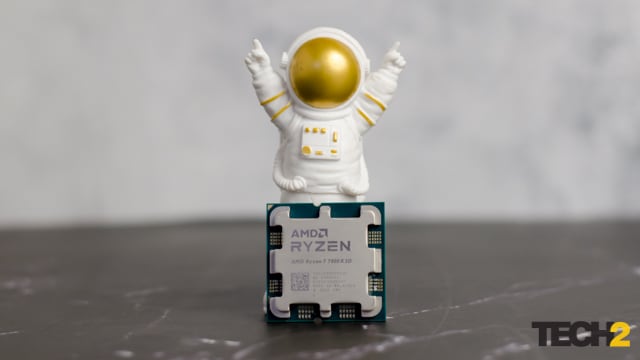
A notable feature of the Ryzen 7 7800X3D is AMD’s 3D V-Cache technology, which sets it apart from most other processors. This technology involves stacking a chip solely dedicated to cache memory on top of another chip, significantly increasing the available cache. Each Zen 4 CCX inherently comes with 32MB of L3 cache. In comparison, other Ryzen 7 7000 processors, like the AMD Ryzen 7 7700X, would have a total of 32MB of L3 cache.
However, AMD takes it a step further by incorporating a 64MB 3D V-Cache chip onto the CCX of the Ryzen 7 7800X3D. This configuration results in an impressive total of 96MB of L3 cache for the Ryzen 7 7800X3D, providing a substantial boost in performance, which in applications like gaming, is a massive advantage. Basically, this allows the CPU to keep the GPU fed properly, consistently and with more data to work with.
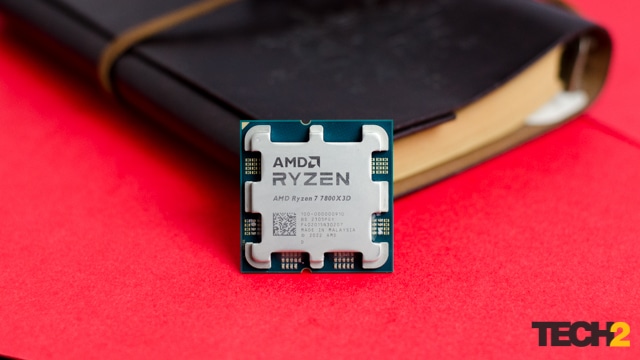
The Ryzen 7 7800X3D is a desktop processor with a TDP of 120W and supports up to 128GB of DDR5 memory in a dual-channel interface. The highest officially supported memory speed is 5200 MHz, but with overclocking (and the right memory modules) you can go even higher. It also supports PCIe 5.0 and has 24 usable Native PCIe lanes, out of a total of 28.
You also get 2 cores of Radeon integrated graphics, running at 2200 MHz.
AMD Ryzen 7 7800X3D Review: Compatibility
Unfortunately, if you have an older AM4 motherboard, you have no choice other than to upgrade to a new one if you’re interested in using the 7800X3D. Also the Ryzen 7 7800X3D supports only DDR5, so you won’t have the option to recycle your old DDR4 RAM KIT. You also have to get one of the newer motherboards from manufacturers, based on the AM5 socket, with the X670E, X670, B650E or B650 chipsets.
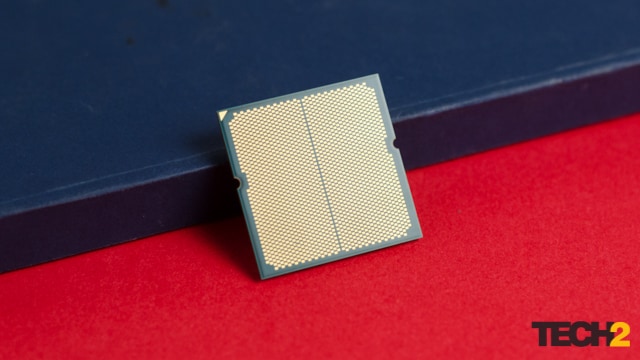
Based on the motherboard you do go for, the Ryzen 7 7800X3D supports AMD’s EXPO Memory Overclocking, Precision Boost Overdrive and ECC. Do keep an eye out that the motherboard and RAM combo you go for supports all these features, and has been updated to run at the highest possible clock speeds.
AMD Ryzen 7 7800X3D Review: Our test bench
For our tests, we ran the Ryzen 7 7800X3D with the Gigabyte X670E AORUS master motherboard, which Gigabyte let us borrow very graciously. For RAM, we went with Kingston Fury Beast 32GB kit (2x16GB) DDR5 running at 6000 MT/s. For storage we had the 500GB unit of the Kingston Fury Renegade NVMe M.2 SSD at PCIe 4.0 speeds.
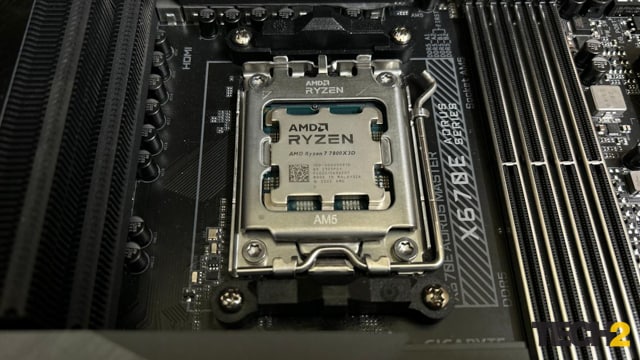
For the GPU, we were using our MSI GeForce RTX 3070 Ti Ventus 3X 8G OC. The 7800X3D doesn’t come with a stock cooler. Instead of AMD’s Wraith cooler, we decided to go for the Noctua NH-U14S. Powering all of this up, was the Corsair CX850M Watt modular PSU for power.
AMD Ryzen 7 7800X3D Review: Performance
The impressive thing about the 7800X3D is that it can achieve gaming frame rates on par with the more expensive CPUs from both AMD and Intel, despite having lower clock speeds. The 7950X3D for example has a higher clock speed, and that is what most people will look at.
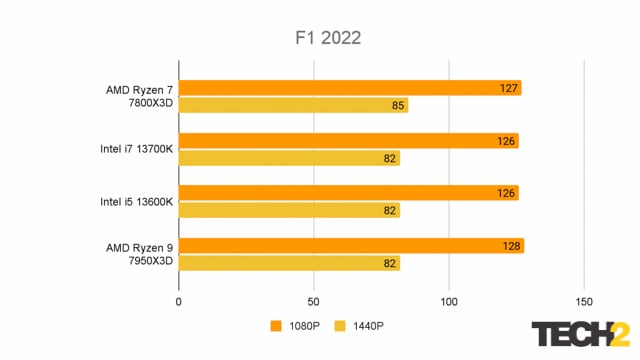
The peak 5.7GHz clock speeds of the 7950X3D can be misleading since they apply only to the CCD without the 3D V-Cache.
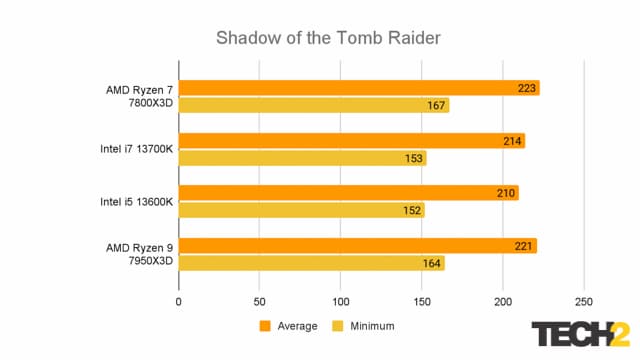
This explains why there is little difference in gaming performance between the AMD chips. However, the Core i9 13900K, a CPU that costs Rs 59,500, and boasts a 5.8GHz boost clock speed and benefits from Intel’s gaming legacy, still falls short compared to the 7800X3D. And come to think of it, AMD is actually targeting the 7800X3D at the i7 13700K.
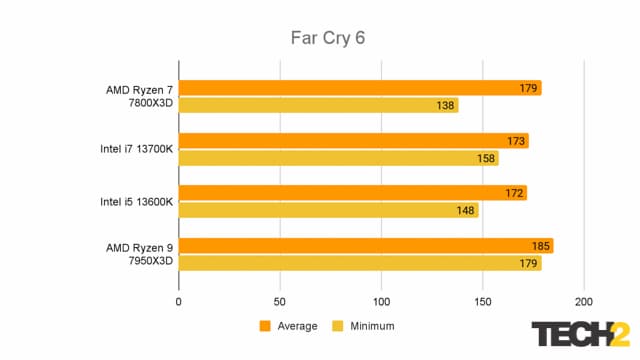
Productivity, on the other hand, tells a completely different story. When it comes to creativity and productivity applications, the focus on the 7800X3D as a gaming-oriented processor becomes evident. While it does outperform the previous generation Ryzen 7 5800X3D with the same core count thanks to the Zen 4 architecture, it falls behind comparable processors at the same price point.
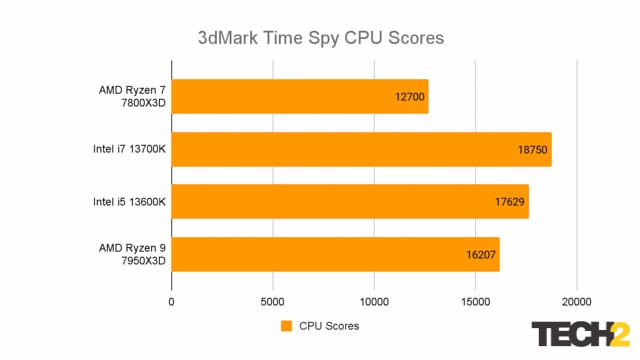
Intel’s top Core i9, Core i7, and Core i5 CPUs still surpass the AMD chip in terms of cache-heavy performance. If you’re seeking a versatile processor that excels in both multi-threaded tasks and gaming, you’ll need to look elsewhere. The 7800X3D lacks that level of versatility.
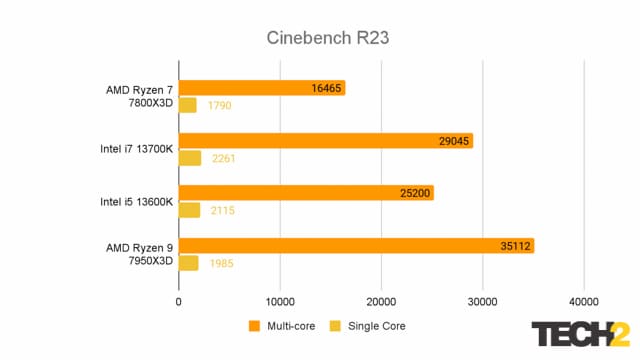
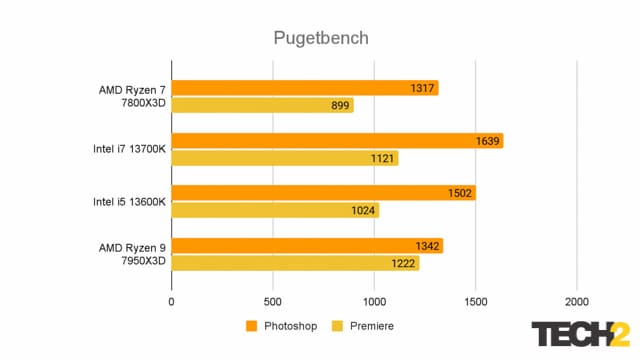
The rendering, encoding benchmarks, and memory bandwidth tests highlight how the slower clock speeds due to the 3D V-Cache limit its performance. However, that’s not the main focus here. The 7800X3D is about being a dedicated gaming CPU, and it excels in that regard while also being highly efficient.
AMD Ryzen 7 7800X3D Review: Power consumption and thermals
To accommodate the increased heat and power demands of the 3D V-Cache, AMD made adjustments to the CCX on the Ryzen 7 7800X3D, resulting in improved energy efficiency compared to other Ryzen 7000-series processors without the 3D V-Cache. As a result, the Ryzen 7 7800X3D stands out as one of the more energy-efficient options available.
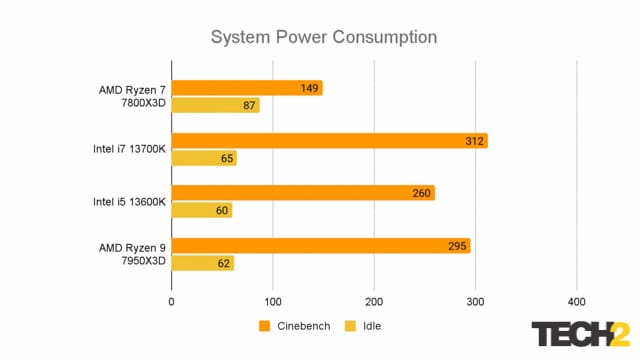
When considering the power consumption relative to its performance, the Ryzen 7 7800X3D may offer the best performance-per-watt ratio among the processors tested, although it could be a close call with impressive performers like the Ryzen 9 7900. This is an area where AMD holds an advantage over Intel, even though energy efficiency typically does not heavily influence purchasing decisions.
However, the thermal performance of the Ryzen 7 7800X3D is less appealing, as the chip reaches its thermal limit of 89 degrees Celsius. In some tests, such as Cinebench, the chip throttles down its clock speed to prevent overheating and potentially damaging itself. Throttling down the clock speed to prevent overheating during intensive tasks is a common occurrence with modern processors. However, it is evident that the presence of the 3D V-Cache in the Ryzen 7 7800X3D does not hinder its performance in this aspect.
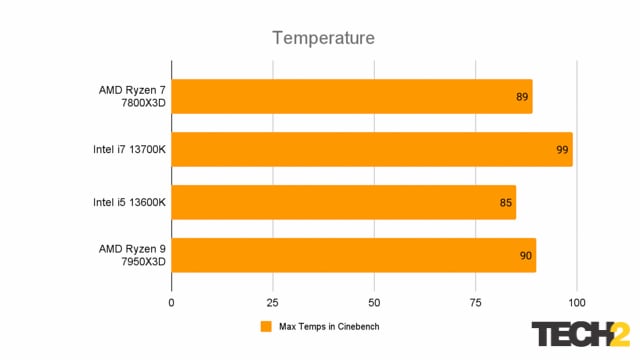
During testing, the 7800X3D demonstrated impressive efficiency, consuming a peak package power of 81W as measured in HWInfo. This level of power consumption allowed the processor to deliver gaming performance that was twice as efficient as the previous generation 3D V-Cache chip and better than the Core i7 13700K. Additionally, the power efficiency of the 7800X3D contributed to its remarkable coolness, with load temperatures reaching a maximum of 89 degrees Celsius according to measurements.
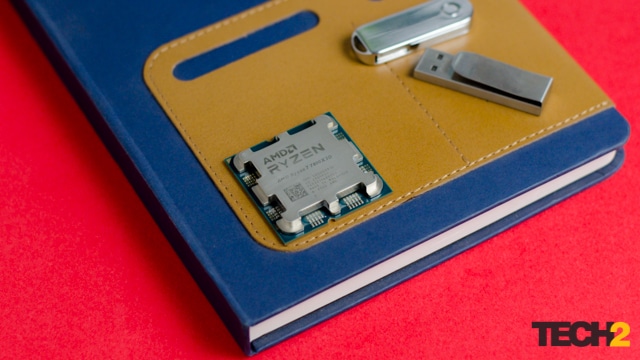
AMD Ryzen 7 7800X3D Review: Verdict
The Ryzen 7 7800X3D is a great CPU, make no mistake about it. It is in fact the best CPU in its price range for gaming. But, when it comes to other computing tasks, it takes some beating from its competitors in Team Blue.
The Ryzen 7 7800X3D is specifically designed for gaming, and it excels in that area. It stands out as the fastest gaming CPU available, rivalling or even surpassing the more expensive Ryzen 9 7950X3D. While it may lag behind in productivity performance, for gamers, the Ryzen 7 7800X3D offers impressive speed and capabilities.
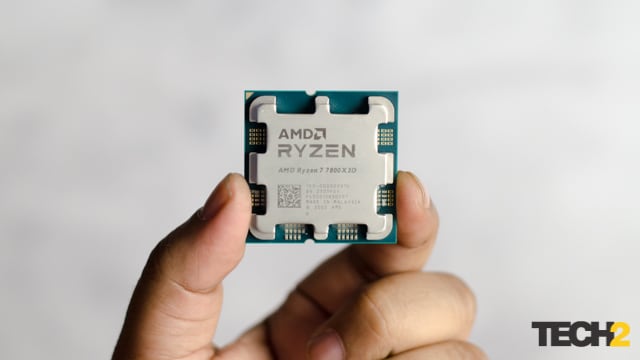
However, if your PC usage involves a combination of gaming and productivity tasks like Photoshop or Premiere Pro, opting for the Ryzen 9 7950X3D or an Intel processor would be a better choice, as they provide similar or marginally lower performance for gaming while performing considerably better in productivity applications.
In terms of power consumption though, choosing an AMD CPU like the Ryzen 7 7800X3D is cost-effective. It offers excellent PC gaming performance without significantly impacting your electricity bill. This is particularly important in markets where electricity costs are rising or for those who prioritize reducing their environmental impact while enjoying PC gaming.
Mehul Reuben DasJun 19, 2023 09:49:41 IST
Pros
– Gaming performance
– Volume of cache
– Annihilates CPUs more expensive than itself in gaming
– PCI Express 5.0 support
– Lower power draw given the performance
– Longer product line for AM5 platform
– Integrated graphics
Cons
– Does not support older platforms or DDR4 RAM
– Productivity performance not at par with similarly priced CPUs
– Lower thermal limit may lead to thermal throttling
– No multiplier-based overclocking
– No cooler included
Price: Rs 44,790
Rating: 4.25/5
AMD Ryzen 7 7800X3D Review: Overview
The Ryzen 7 series has been monumental in establishing AMD as a proper, true value-for-money gaming and performance option for people looking for a no-frills, high-performance CPU. The CPUs in the Ryzen 7 series have been a massive hit for people looking to build a beast of a gaming machine, without taking the Intel route.

With their 7000 series of CPUs, AMD has turned the dial all the way up to 11. The AMD Ryzen 9 7950X3D is often considered to be one of the best gaming CPUs to have ever come from team red. However, the more recently launched Ryzen 7 7800X3D is not only a better value-for-money CPU but also performs better, especially if you’re just going to be gaming.
There’s no easy way to say this, but the Ryzen 7 7800X3D stands out as the fastest gaming CPU on the market, outperforming pricier alternatives from Intel and even surpassing AMD’s own lineup.
In simple terms, the Ryzen 7 7800X3D is the highly recommended Zen 4 3D V-Cache CPU due to its exceptional speed and impressive power efficiency. Surprisingly, AMD chose to postpone the launch of this particular model and instead introduced the 7950X3D and 7900X3D versions, which became available approximately a month ago.

AMD Ryzen 7 7800X3D Review: Specifications
Similar to other AMD Ryzen processors, the Ryzen 7 7800X3D, based on the AM5 platform, follows a chiplet design, where multiple chips are integrated into a single package. Inside this processor, you’ll find two main chips. The first chip, known as the CCX, is fabricated using a 5nm manufacturing process and contains all 8 Zen 4 CPU cores of the Ryzen 7 7800X3D. The second chip, called the I/O die, is manufactured using a 6nm process and includes various specialized components such as the integrated graphics processor (IGP), memory controller, and PCI Express controller. The CPU comes with 8 cores, as we said, and 16 threads.

A notable feature of the Ryzen 7 7800X3D is AMD’s 3D V-Cache technology, which sets it apart from most other processors. This technology involves stacking a chip solely dedicated to cache memory on top of another chip, significantly increasing the available cache. Each Zen 4 CCX inherently comes with 32MB of L3 cache. In comparison, other Ryzen 7 7000 processors, like the AMD Ryzen 7 7700X, would have a total of 32MB of L3 cache.
However, AMD takes it a step further by incorporating a 64MB 3D V-Cache chip onto the CCX of the Ryzen 7 7800X3D. This configuration results in an impressive total of 96MB of L3 cache for the Ryzen 7 7800X3D, providing a substantial boost in performance, which in applications like gaming, is a massive advantage. Basically, this allows the CPU to keep the GPU fed properly, consistently and with more data to work with.

The Ryzen 7 7800X3D is a desktop processor with a TDP of 120W and supports up to 128GB of DDR5 memory in a dual-channel interface. The highest officially supported memory speed is 5200 MHz, but with overclocking (and the right memory modules) you can go even higher. It also supports PCIe 5.0 and has 24 usable Native PCIe lanes, out of a total of 28.
You also get 2 cores of Radeon integrated graphics, running at 2200 MHz.
AMD Ryzen 7 7800X3D Review: Compatibility
Unfortunately, if you have an older AM4 motherboard, you have no choice other than to upgrade to a new one if you’re interested in using the 7800X3D. Also the Ryzen 7 7800X3D supports only DDR5, so you won’t have the option to recycle your old DDR4 RAM KIT. You also have to get one of the newer motherboards from manufacturers, based on the AM5 socket, with the X670E, X670, B650E or B650 chipsets.

Based on the motherboard you do go for, the Ryzen 7 7800X3D supports AMD’s EXPO Memory Overclocking, Precision Boost Overdrive and ECC. Do keep an eye out that the motherboard and RAM combo you go for supports all these features, and has been updated to run at the highest possible clock speeds.
AMD Ryzen 7 7800X3D Review: Our test bench
For our tests, we ran the Ryzen 7 7800X3D with the Gigabyte X670E AORUS master motherboard, which Gigabyte let us borrow very graciously. For RAM, we went with Kingston Fury Beast 32GB kit (2x16GB) DDR5 running at 6000 MT/s. For storage we had the 500GB unit of the Kingston Fury Renegade NVMe M.2 SSD at PCIe 4.0 speeds.

For the GPU, we were using our MSI GeForce RTX 3070 Ti Ventus 3X 8G OC. The 7800X3D doesn’t come with a stock cooler. Instead of AMD’s Wraith cooler, we decided to go for the Noctua NH-U14S. Powering all of this up, was the Corsair CX850M Watt modular PSU for power.
AMD Ryzen 7 7800X3D Review: Performance
The impressive thing about the 7800X3D is that it can achieve gaming frame rates on par with the more expensive CPUs from both AMD and Intel, despite having lower clock speeds. The 7950X3D for example has a higher clock speed, and that is what most people will look at.

The peak 5.7GHz clock speeds of the 7950X3D can be misleading since they apply only to the CCD without the 3D V-Cache.

This explains why there is little difference in gaming performance between the AMD chips. However, the Core i9 13900K, a CPU that costs Rs 59,500, and boasts a 5.8GHz boost clock speed and benefits from Intel’s gaming legacy, still falls short compared to the 7800X3D. And come to think of it, AMD is actually targeting the 7800X3D at the i7 13700K.

Productivity, on the other hand, tells a completely different story. When it comes to creativity and productivity applications, the focus on the 7800X3D as a gaming-oriented processor becomes evident. While it does outperform the previous generation Ryzen 7 5800X3D with the same core count thanks to the Zen 4 architecture, it falls behind comparable processors at the same price point.

Intel’s top Core i9, Core i7, and Core i5 CPUs still surpass the AMD chip in terms of cache-heavy performance. If you’re seeking a versatile processor that excels in both multi-threaded tasks and gaming, you’ll need to look elsewhere. The 7800X3D lacks that level of versatility.


The rendering, encoding benchmarks, and memory bandwidth tests highlight how the slower clock speeds due to the 3D V-Cache limit its performance. However, that’s not the main focus here. The 7800X3D is about being a dedicated gaming CPU, and it excels in that regard while also being highly efficient.
AMD Ryzen 7 7800X3D Review: Power consumption and thermals
To accommodate the increased heat and power demands of the 3D V-Cache, AMD made adjustments to the CCX on the Ryzen 7 7800X3D, resulting in improved energy efficiency compared to other Ryzen 7000-series processors without the 3D V-Cache. As a result, the Ryzen 7 7800X3D stands out as one of the more energy-efficient options available.

When considering the power consumption relative to its performance, the Ryzen 7 7800X3D may offer the best performance-per-watt ratio among the processors tested, although it could be a close call with impressive performers like the Ryzen 9 7900. This is an area where AMD holds an advantage over Intel, even though energy efficiency typically does not heavily influence purchasing decisions.
However, the thermal performance of the Ryzen 7 7800X3D is less appealing, as the chip reaches its thermal limit of 89 degrees Celsius. In some tests, such as Cinebench, the chip throttles down its clock speed to prevent overheating and potentially damaging itself. Throttling down the clock speed to prevent overheating during intensive tasks is a common occurrence with modern processors. However, it is evident that the presence of the 3D V-Cache in the Ryzen 7 7800X3D does not hinder its performance in this aspect.

During testing, the 7800X3D demonstrated impressive efficiency, consuming a peak package power of 81W as measured in HWInfo. This level of power consumption allowed the processor to deliver gaming performance that was twice as efficient as the previous generation 3D V-Cache chip and better than the Core i7 13700K. Additionally, the power efficiency of the 7800X3D contributed to its remarkable coolness, with load temperatures reaching a maximum of 89 degrees Celsius according to measurements.

AMD Ryzen 7 7800X3D Review: Verdict
The Ryzen 7 7800X3D is a great CPU, make no mistake about it. It is in fact the best CPU in its price range for gaming. But, when it comes to other computing tasks, it takes some beating from its competitors in Team Blue.
The Ryzen 7 7800X3D is specifically designed for gaming, and it excels in that area. It stands out as the fastest gaming CPU available, rivalling or even surpassing the more expensive Ryzen 9 7950X3D. While it may lag behind in productivity performance, for gamers, the Ryzen 7 7800X3D offers impressive speed and capabilities.

However, if your PC usage involves a combination of gaming and productivity tasks like Photoshop or Premiere Pro, opting for the Ryzen 9 7950X3D or an Intel processor would be a better choice, as they provide similar or marginally lower performance for gaming while performing considerably better in productivity applications.
In terms of power consumption though, choosing an AMD CPU like the Ryzen 7 7800X3D is cost-effective. It offers excellent PC gaming performance without significantly impacting your electricity bill. This is particularly important in markets where electricity costs are rising or for those who prioritize reducing their environmental impact while enjoying PC gaming.
